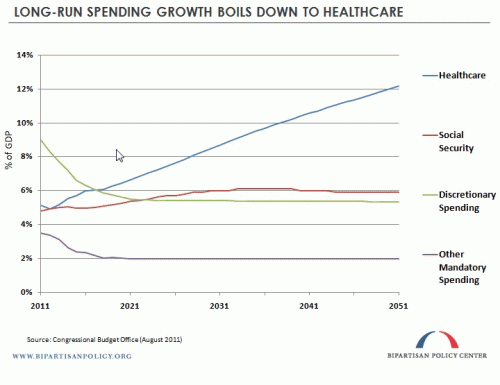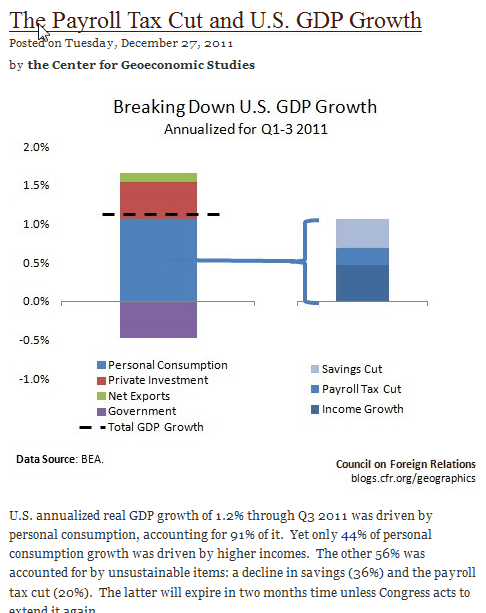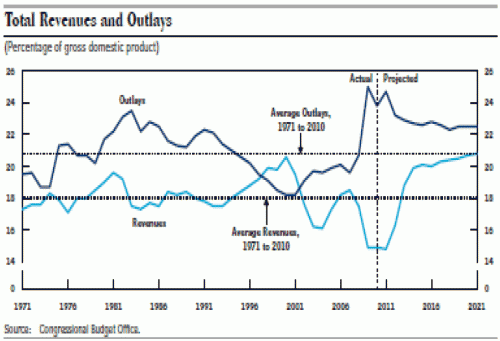The main public policy need for the U.S. in 2012 is to enact policies that encourage economic growth now, while moving toward a sustainable budget over the long run. This main policy need is unchanged from 2011, and we didn’t manage to do either very well. The Council on Foreign Relations has a nice graph that sums up the short term reality:
We experienced anemic economic growth for the first 3 quarters of 2011, and even that was driven partly by short term measures such as the payroll tax cut. However, at the same time we were taking short term actions designed to stimulate the economy, we were also cutting other governmental spending (identifying “pay-fors”) that harmed short term growth. Paying for short term policy initiatives designed to improve slow economic growth via offsetting spending cuts makes no sense when interest rates are so low.
The inclination to reduce deficits should be focused on developing a plan for a long range sustainable budget. In trying to do so, we are exactly where we were 365 days ago: we need to agree to a target level of GDP that will be redistributed by government, and a plan that can plausibly get us there (or at least close!). The President’s Fiscal Commission aimed for balance at 21 percent of GDP in around 25 years (there are credible plans that set a higher percent of GDP balance target than this). In the 1970s and 1980s, government outlays were routinely higher than 21 percent of GDP, and the Baby Boomers were paying taxes then and not moving into Medicare and Social Security as they will over the next 20 years.
In addition to raising taxes, achieving a balanced budget at 21 percent of GDP in 2035 would require profound success in health care cost control as compared to default spending levels; if we managed to achieve this it would represent one of the greatest public policy achievements in our nation’s history. There are of course plans to achieve a balanced budget at lower levels of GDP (18-20 percent) whose main goal is to shrink spending toward historical tax receipt levels. This is fair enough as a goal, but such plans will require levels of health care cost control that are unimaginable based on past experience. How will we do this?
Any plan to address our long range fiscal problems must have a credible means of addressing the default spending-side reality summed up nicely in the Bipartisan Policy Center’s graph below. Anyone espousing a goal of a balanced budget has got to be in the health reform business, whether they realize it or not.
 I and we here at TIE will be down in the weeds on many health policy details during the course of the coming year because that is what we do, and the details are crucial. However, it is useful to keep in mind these higher level realities as we do so.
I and we here at TIE will be down in the weeds on many health policy details during the course of the coming year because that is what we do, and the details are crucial. However, it is useful to keep in mind these higher level realities as we do so.
Happy New Year.
DT



